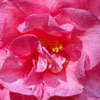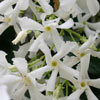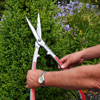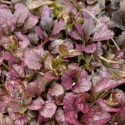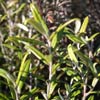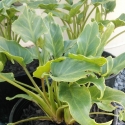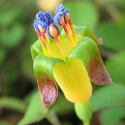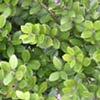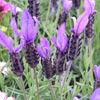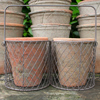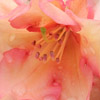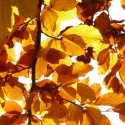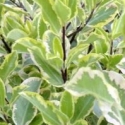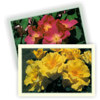Plants for sale in New Zealand
If you are looking for a range of quality, mail-order plants to order on-line, from an easy to use secure web-site then you have found the right place. Wairere Nursery based in rural Waikato has a huge selection to choose from. Herbs and Perennials, New Zealand Natives, Trees, Shrubs, Camellias, Roses, Rhododendrons and a huge variety of delicious Fruit Trees along with the odd Nut or two. Wairere also have an excellent range of well priced Hedging. Harry and Lloyd are happy to assist with any questions you may have about finding the right plant for the right place. All plants will be carefully packaged and freighted direct to your door. Just click on the link to enter the wonderful world that is Wairere or if you prefer visit us at 826 Gordon Road, R D 1, Hamilton.
There are definite cultural requirements to guarantee top performance, however Camellias are remarkably tolerant and adaptable. They are invaluable for hedging, screening, background planting, container planting and as one-off stunning specimens. They trim well, transplant easily, and can provide flowers from as early as March through to November. Many have a delicate fragrance - especially species Camellias.
When choosing a Camellia be aware that the word miniature usually describes the leaf and flower size rather than the size of the plant. However no need to worry about size really as on average most Camellias only grow to aproximately 2m. If you want your plant to stay under 2m then just give it a trim immediately after flowering. The flower colour ranges from white to pink and red with many wondrous variations on this theme. Flowers can be exquisitely simple and single to full, frilly, blowsy numbers. Whatever tickles your fancy.
Camellias are hapiest in what is described as acid soil. This usually means soil that does not have too much clay content. They like a nice peaty soil that drains well. You can work some peat into your soil if you feel it has a bit too much clay. The roots are fibrous (this means they dont have a long tap root) and near the surface so it is important to keep them cool in the heat of summer with a layer of mulch such as bark or compost.
If at all possible plant with protection from the afternoon sun. You can buy a specialized acid fertilizer to feed your Camellias which will assist them to stay healthy and keep the foliage the deep glossy green that we all love. Fertilizing is usually done in early autumn. Warning: remember when aplying fertilizer, less is always better than more i.e. follow the instructions.
If you are looking for early autumn flowering species, then as a general rule choose C. sasanqua (sa-sang-kwa) as they are usually the first to flower in March followed by C. japonica and C. reticulata. Camellia hybrids, and there are thousands of them, generally flower from May through to October. All are evergreen i.e. keep their leaves all year round.
If you are feeling a bit tired from thinking about all this gardening put your feet up and make a nice cupa knowing that it has been brewed from the leaves of the lovely Camellia sinensis. Camellias, good for your body, good for your soul.
Pruning a climber or vine in the early stages of its growth is important. As you nip out the growing tips, you encourage the plant to branch out, resulting in many stems that can be trained up the suport. As the climber matures, encourage prolific flowering by pruning, but be aware of the different flowering habits of different plants: some flower on old wood – last season’s growth, and some on new wood – the present season’s growth, so check before you prune. A very important element with regard to pruning is to ensure that you do not cut through a major stem as this will cause a whole section of the plant to die off.
Because a climber is likely to be a permanent fixture in the garden, it is wise to prepare the soil well before planting. Check that the soil is not filled with builder’s rubble as this is often the case next to walls. Include large quantities of organic compost and check that the drainage is good. You are only limited by your imagination. Some climbers such as Trachelospermum jasminoides (AKA Star Jasmine) and Ficus pumila can be used as either a ground cover or small climber depending on how you train the plant initially. Both of these climbers are evergreen. Of equal importance are deciduous climbers such as Clematis and Wisteria which flower in early spring and offer masses of delicate blooms as well as fragrance.
Have a browse through our range of climbers and we are sure you will find a plant that you can easily look up.
And the well-worn wail of “Id simply love to grow fruit trees but I have no space in my garden” does not cut it. With the help of the technique of Espalier and with so many new varieties being bred that can live hapily in tubs, there is no excuse. One gardener we know has a variety of fourteen different fruits growing in her 500sq meter section and she still has space for ornamentals, a pond, veggies and a small native forest – plus the house of course.
The varieties of most fruits are now so plentiful that there is something to please all tastes – no matter how nuts about fruit you are! Or just how fruity you are!
‘Fruits and Nuts’ encompasses a broad spectrum of plants, but like most traditionally cultivated plants, they all generally enjoy well-drained moist soils that are high in humus. They do need regular attention in the form of annual pruning which helps to expose the branches to the sun and air which practice helps to produce a quality harvest. But hey, what is a bit of effort with the shears once a year in comparison to the prize pleasure of a freshly picked, juicy, sweet plum or pear or peach?
Ever heard that saying “nutty as a fruitcake” – how did nuts first become associated with being a little crazy? Well we all know how rich in nutritional content nuts are, and that no self-respecting fruitcake would be without them, so don’t be nuts, go nuts and grow nuts!
We have all heard the expression ‘a bad workman always blames his tools'; - well as gardeners, it really is essential that we have the right Tools, Accessories, Fertilisers and Sprays to ensure that we not only provide the optimum conditions for fabulous growth, but that we have fun doing it! If we have the right tools for the job at hand, we are sure to do it well. And doing the job well will surely result in flourishing gardens.
We have sourced a high quality range of the most frequently used and needed products and have made them available for you to purchase on the website when you do your other online shoping.
What could be more architectural than a Cabbage Tree? Perhaps the only competitor would be our NZ Flaxes (Phormiums) which are available in small, medium and large with a wide colour palette. These cannot be beaten for toughness and adaptability and are simply fabulous planted en masse. Can you imagine New Zealand without Kowhai trees (Sophora) driping with bright yellow bells in summer and being squabbled over by noisy Tui's? Did you know that some Kowhai plants only reach 1m and are therefore ideal for smaller gardens or container growing? And what about our own unique Christmas Tree, the Pohutakawa (Metrosideros) which is so easy and rewarding to grow in frost free areas.
You won't get a better ground cover for difficult sites than our native Coprosma varieties. Then there are native "grasses" for mass planting and Hebes for adding year round colour. Corokias and Pittosporums for hedging, windbreaks, or no nonsense background foliage fillers. Did you know that the shy Pittosporum flowers have an exquisite perfume? Pseudopanax offer unique foliage form and colour and are ideal for adding height. In garden design our native plants can stand alone or combine superbly with exotic imports to provide a rich tapestry.
For best results plant Native plants in early spring in a well considered position as, just like us, they resent being moved unnecessarily. Other than that most natives are extremely easy and rewarding to grow.
The palms that grow in our New Zealand climate are those rare species that can tolerate colder climates. The Cotton palm, Jelly palm, Date palm and Fan palm are all able to manage not only the cooler climes but can also handle the stormy coastal winds and even light frosts.
Palm leaves can be long and divided, like giant fern leaves – called ‘feather palms, or they can be rounded and fan shaped – called ‘fan palms’. Palms are exceptional specimens to use in the landscape design when desiring to create a ‘tropical’ feeling in the garden – that relaxed and ‘beachy’ look that gives the illusion that you are living on a desert island. Sit on a lounger under the palm and call for a Pina Colada!
And then there are the Cycads. These prehistoric plants are thought to have been a delicacy of the Dinosaurs! Imagine a creature eating a Cycad. Sounds like sacrilege. But these wonderful, ancient and slow growing gymnosperms are well worth including in the landscape design or in containers if you are a patient sort.
In designing with plants, it is the perennials that ensure that there is constant change, and that there is always an element of surprise or interest in the garden.
Getting to know the dormant and flowering periods of the plants is essential to achieving the right balance in the design, so that as one perennial goes to sleep, another awakens.
Perennials, perhaps more than any other group of plants, are available in a huge range of colours, forms, textures and fragrances in both foliage and flower. There are perennials suitable for almost every area of the garden: from full sun to full shade, in large gardens or small beds and to suit every mood or style. Popular perennial plants include Penstemon, Gaura, Canna, Dahlias, Salvias, Lupins, Columbines, Lilies, Delphiniums and Hellebores - oh! the list is endless.
A perennial plant (Latin per, "through", annum, "year") is a plant that lives for more than two years, unlike an Annual which grows, sets seed, gayly disperses it and then dies - all in a single season. Perennial plants are divided into two large groups: those that are woody and those that are herbaceous. They can be short-lived (only a few years) or they can be long-lived, and can vary in size from only a few millimeters to over 10 meters tall. They include a wide assortment of plant groups from Ferns to the highly diverse flowering plants like Orchids and Ornamental Grasses.
Perennials typically grow structures that allow them to adapt to living from one year to the next. These structures include bulbs, tubers, woody crowns, rhizomes plus others. They might have specialized stems or crowns that allow them to survive periods of dormancy over cold or dry seasons during the year. Many perennials have adapted to survive under extreme environmental conditions: some can survive hot dry conditions, or cold temperatures. These plants tend to invest a lot of resource into their adaptations and often do not flower and set seed until after a few years of growth.
Many perennials produce relatively large seeds, which can have an advantage as they produce larger seedlings after germination that can better compete with other plants or more quickly develop leaves, ensuring their survival.
In warmer climates, perennials grow continuously. In seasonal climates, their growth is limited to the growing season. For example, in temperate regions a perennial plant may grow and bloom during the warm part of the year, with the foliage dying back in the winter. These plants are deciduous perennials. Regrowth is from existing stem tissue. In some species, perennials retain their foliage all year round; these are evergreen perennials. Come in and take a look around. We've always got something pretty, perky and persuasive in the perennial line.
There is a huge amount of versatility in gardening in containers. Conditions can be ideally created. Plants in pots can provide colour to brighten up patios, steps pathways, courtyards, balconies, rooftops, decks, windowsills and just about any situation that may look drab. Pots are also the ideal place to nurture and display plant collections that are rare, valuable and exotic.
When planted with some attention given to the type of plant, colour of bloom and foliage, textural contrast etc. containers become living arrangements. Just about any plant may be grown in a container and flexibility of planting and arranging can be more varied than permanent planting. As the seasons change, so does the suns path and containers can be moved according to the sun/shade needs of the plants.
You can also use container plants to show off a particular plant by displaying it in a prominent place when it is in bloom and retiring it to the back benches when its flowering time is over.
Containers are an ideal way to grow edibles in limited space. A whole range of herbs can be grown in pots and lots of vegetables will thrive, given the right conditions.
We always have a really interesting range of pots, containers, planters, urns etc. in a wide variety of shapes and colours and styles. From chunky terracotta to great Grecian urns to glazed pottery, the stock keeps changing and some of them are available at Wairere exclusively. Come in and have a browse, or browse our website right here.
Roses have inspired poets, writers, artists, designers and gardeners for thousands of years. We are sure our extensive range will inspire you. Remember we have the largest range in New Zealand to choose from whether you love modern Hybrid Teas, old-fashioned Ramblers, Floribundas and everything in between. Just click on the various varieties listed for specific information and range.
"Rose! Thou art the sweetest flower that ever drank the amber shower: Even the Gods, who walk the sky, are amorous of thy scented sigh."
Although some people regard shrubs as miniature trees, they have completely different growth habits. Some can sucker themselves and send creeping underground stems which root and thereby propagate themselves, whilst others renew themselves after hard pruning.
From broadleaf evergreens to deciduous shrubs, from flowering shrubs to those valued chiefly for their foliage or twigs, the diversity amongst this group of plants is infinite. When considering creating a feature or focal point with a shrub, take into consideration its habits – if you want it to retain its emphasis in the design, make sure it is an evergreen. If you want a shrub to make a splash of colour that is ongoing, check the length of the flowering period.
Some shrubs are best planted in groups for bold effect. Plant in groups of odd numbers – 3, 5, 7. There is a wide range of shrubs that are quick and dense growing and that are therefore ideal for use as hedges. The native species particularly, lend themselves to this purpose. Try Corokia, Griselinia, Pittosporum varieties.
Small, low-growing shrubs such as lavender and thyme are often termed sub-shrubs; a natural plant community dominated by shrubs is called a shrubland. An area of cultivated shrubs in a park or garden is known as a shrubbery.
There is an ideal shrub for every purpose: for acting as a screen, for privacy, for softening the lines of the house, for releasing fantastic fragrance or simply for looking beautiful. Come into the Nursery and we'll be happy to guide you and answer any questions you may have.
There are many plants that lend themselves to being Topiary specimens. Essentially, it is more desirable that the plant is evergreen, that the leaves are fairly small and interesting, that it produces a seasonal flower and, most important, that it responds well to constant pruning.
People imagine that the Art of Topiary is time-consuming and only for those who have that special artistic flair - but that is a myth! Once the shape has been formed initially, it is merely a question of giving it the odd haircut. It is a garden task that can be done with secateurs in one hand - whilst the other hand can hold a glass of chilled Chardonnay!
And as for that artistic flair, you never know until you try. Unleash that inner creativity and give it a go! You may be pleasantly surprised. And at the very worst, you can always let the plant re-grow, like a bad haircut!
There are many reasons for selecting a deciduous specimen as oposed to an evergreen. The primary one is that if the tree is planted in an area where you wish to have summer shade and winter sun, then the habit that a deciduous tree has of shedding its leaves is perfect. So if you want shade over your outdoor entertaining area to protect you from the harsh summer sun, but in that same area you want the warmth of the winter sun to penetrate, then you must choose a deciduous specimen.
Another reason is that deciduous trees bring the ‘wow’ factor in the autumn with their exquisite displays of reds, oranges, yellows, ambers and browns. Every garden is enhanced by a display of this autumnal beauty. There is a constantly changing display as the deciduous tree moves through the seasons; there is definition that cannot be attained with an evergreen tree. From the beauty of the fine tracery of bare branches in the winter to the excitement of the new leaf buds apearing in spring, to the full extent of dense greenery in the summer to the stunning colour in the autumn, the seasons are distinctive.
It is important to know to what height and width the tree will grow as it is likely to become a permanent structure in the garden and trees do not take kindly to being pruned. They have different natural shapes: spreading, pyramidal, conical, round, flat toped, columnar etc. and they need to be allowed to maintain their natural shapes.
Evergreen Trees provide shade, shelter, privacy and atmosphere. They assist in the creation of a micro-climate in your garden, protecting whatever has been underplanted. Some trees are valued for their flowers in season, but these are not the prime consideration when selecting a tree for use in the garden design: elegance of habit, attractive foliage, shape and suitability for the position are more important.
Trees must be carefully selected for size and habit. So often, trees have to be removed because they outgrew their garden space. For small gardens, choose smaller growing trees so that they fill but do not cramp the space that has been allotted to them. For larger gardens, go wild and plant a forest of giants!
When selecting trees for the garden, consider the following questions:
- How high do the branches grow?
- Can you walk underneath the tree or do the branches droop to the ground?
- Does the foliage have a sparse habit – allowing some filtered sunlight through or is it dense, and therefore dark underneath?
- What is the full grown height, width, architectural form and shape of the tree?
- What are the tolerance factors of moisture, heat, cold, drought, pH, salinity, space and light?
Know what you want and then set out to tick all the boxes to ensure that you select the right tree. And when in doubt, seek us out and we shall help you to make the right decision.
Check out our other pages -
Roses for Sale in New Zealand
Camellias for Sale in New Zealand NZ
Fruit Trees for sale in New Zealand
Perrenials for sale in New Zealand
Trees for sale in New Zealand
Plants for sale in New Zealand
Plants for sale Online in New Zealand
Topiary Plants for sale in New Zealand
Plants for sale in New Zealand
Nurseries in Hamilton New Zealand
Hedging Plants for Sale in New Zealand
Hamilton Garden Centres New Zealand
Hamilton Landscaping New Zealand
Native Trees For Sale in New Zealand
Mail Order Plants New Zealand
Mail Order Roses New Zealand
Mail Order Rose Bushes New Zealand
Mail Order Nurseries in New Zealand
Roses for Sale in New Zealand
Roses for Sale in New Zealand
